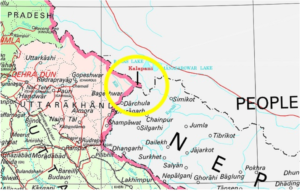9 May 2024 : Daily Current Affairs
1. Ban deprives over 4 lakh undertrials of opportunity to vote
(Source – The Hindu, Section – News, Page – 4)
| Topic: GS2 – Indian Polity |
| Context |
| ● The ongoing Lok Sabha elections in India have raised concerns over the voting rights of over 400,000 undertrials in prisons.
● Legal experts question the fairness of barring undertrials from voting while allowing some prisoners to contest elections from jail. |
Analysis of the news:
- Over 400,000 undertrials in Indian prisons cannot vote due to a law barring prisoners from voting, regardless of their status.
- However, some prisoners, like Amritpal Singh and Engineer Rashid, are running for election from jail, highlighting inconsistencies in the law.
- Legal experts argue that if prisoners can run for office, undertrials should have the right to vote.
- Section 62(5) of the Representation of the People Act prohibits voting for anyone confined in prison, convict or undertrial.
- Critics point out that this blanket ban lacks reasonable classification based on the crime or sentence duration.
- Security concerns are cited as the reason for the ban, especially in prisons with a mix of inmates, including high-risk individuals.
- Both allowing undertrials to vote outside and setting up polling booths in prisons are seen as potential security threats.
| Voting rights in India |
| Voting rights in India
● Indian citizens aged 18 and above who are registered voters are eligible to vote. ● No citizen can be detained or prevented from voting unless they are disqualified. ● Each voter is entitled to cast one vote only in the constituency where they are registered. ● Eligible voters must register in their respective constituencies and obtain EPIC cards. ● Participation in the electoral process requires registration in the electoral roll. ● Citizens can vote in national, state, district, and local government body elections with a valid voter ID. Who is not allowed to vote in India? ● Every individual registered in the electoral roll of a constituency is entitled to vote in that constituency according to the Representation of the People Act. ● Disqualifications listed in Section 16 of the Representation of the People Act, 1950, prevent certain individuals from voting. ● Voting in more than one constituency of the same class during a general election is prohibited, and votes in such cases are deemed void. ● Voting multiple times in the same constituency, even if the person’s name is registered more than once, is not allowed, and all such votes are void. ● Section 62(5) of the Representation of the People Act prohibits voting by individuals confined in prison, whether serving a sentence or in police custody, with exceptions for those under preventive detention. ● However, the prohibition on voting does not nullify an individual’s status as an elector if their name is listed in the electoral roll. ● Proxy voting is allowed under certain circumstances, exempting proxies from the restrictions outlined in subsections (3) and (4) regarding voting in multiple constituencies or multiple times in the same constituency. |
| Practice Question: Discuss the ethical and legal implications of denying voting rights to undertrials in Indian prisons, juxtaposed with the allowance of some prisoners to contest elections from jail. (150 Words /10 marks) |
2. India is now third largest producer of solar power
(Source – The Hindu, Section – News, Page – 4)
| Topic: GS3 – Indian Economy – Infrastructure – Energy |
| Context |
| ● In 2023, India surpassed Japan to become the world’s third-largest solar power producer, generating 113 billion units.
● Despite ranking fifth in installed capacity, India’s solar output remains low compared to its potential. ● Global renewables, led by China, reached 30% of electricity production in 2023, signalling a shift away from fossil fuels. |
Analysis of the news:
- In 2023, India surpassed Japan to become the world’s third-largest producer of solar power, generating 113 billion units compared to Japan’s 110 billion units.
- Despite ranking fifth globally in installed power capacity at 73 gigawatts, India’s solar power output accounts for only 6.66% of its total electricity production.
- Fluctuations in power demand and local circumstances contribute to the gap between installed capacity and actual solar power production.
- India’s solar power surge was aided by a 2% decline in Japan’s power demand in 2023.
- China remains the world’s largest solar power producer, generating 584 billion units in 2023, surpassing the combined output of the United States, Japan, Germany, and India.
- Globally, renewable energy sources accounted for 30% of electricity production in 2023, with China leading the expansion in solar and wind power.
- Ember forecasts a decline in fossil fuel generation in 2024, suggesting that 2023 might mark the global peak in fossil fuel production.
| Solar Energy |
| Need for the Shift to Solar Energy:
● Environmental Benefits: Solar energy is a renewable resource that produces minimal greenhouse gas emissions, reducing reliance on fossil fuels and mitigating climate change. ● Energy Security: Solar energy decreases dependence on imported fossil fuels, enhancing energy security and resilience to geopolitical disruptions. ● Cost Competitiveness: Advances in technology have significantly reduced the cost of solar energy production, making it increasingly competitive with conventional energy sources. ● Job Creation: The solar industry creates jobs in manufacturing, installation, maintenance, and research, contributing to economic growth and stability. ● Energy Access: Solar power offers a decentralized energy solution, expanding access to electricity in remote and underserved areas, improving livelihoods, and fostering socio-economic development. Challenges Facing Solar Energy Adoption: ● Intermittency: Solar energy generation is intermittent and dependent on weather conditions, necessitating efficient storage solutions and grid integration. ● Land Use: Large-scale solar installations require significant land area, raising concerns about land use conflicts and environmental impact. ● Storage Technology: Storage technologies like batteries need further development to store excess energy generated during peak sunlight hours for use during low-light periods. ● Policy and Regulatory Hurdles: Inconsistent policies, lack of supportive regulations, and inadequate incentives hinder solar energy deployment. ● Investment Barriers: Initial investment costs remain a barrier for some, despite decreasing solar panel prices, requiring innovative financing mechanisms and incentives. Way Forward for Solar Energy: ● Technological Innovation: Continued research and development in solar technology to improve efficiency, storage capacity, and cost-effectiveness. ● Infrastructure Development: Expansion and modernization of electricity grids to accommodate distributed solar generation and improve reliability. ● Policy Support: Implementation of supportive policies, such as feed-in tariffs, net metering, tax incentives, and renewable energy targets, to encourage solar adoption. ● Public Awareness: Education and awareness campaigns to promote the benefits of solar energy and facilitate community participation in solar projects. ● International Collaboration: Collaboration between governments, businesses, and international organizations to share best practices, mobilize financing, and accelerate the global transition to solar energy. |
| PYQ:
Q.1 India has immense potential of solar energy though there are regional variations in its development. Elaborate. (250 words/15m) (UPSC CSE (M) GS-1 2020) Q.2 To what factors can the recent dramatic fall in equipment costs and tariff of solar energy be attributed? What implications does the trend have for the thermal power producers and the related industry? (200 words/12.5m) (UPSC CSE (M) GS-3 2015) |
| Practice Question: Analyse India’s recent ascent as a significant solar power producer in the global context, considering its implications for energy security, environmental sustainability, and economic growth. (150 Words /10 marks) |
3. NASA working out a time standard for the moon
(Source – The Hindu, Section – Science, Page – 7)
| Topic: GS3 – Science and Technology |
| Context |
| ● In preparation for upcoming moon missions, NASA plans to establish a Coordinated Lunar Time (LTC), synchronized with Earth’s Coordinated Universal Time (UTC).
● This initiative, mandated by the White House, aims to standardize timekeeping on the moon and coordinate cislunar operations with international partners. |
Analysis of the news:
- NASA plans to establish a Coordinated Lunar Time (LTC) to standardize timekeeping on the moon.
- The Coordinated Lunar Time (LTC) will synchronize with Earth’s Coordinated Universal Time (UTC) and involve federal departments like Commerce, Defense, State, and Transportation.
| Coordinated Lunar Time (LTC) |
| ● Coordinated Lunar Time (LTC) is a proposed timekeeping system for lunar activities, analogous to Earth’s Coordinated Universal Time (UTC).
● LTC aims to provide a standardised time reference for lunar missions and settlements, facilitating synchronisation of operations and communications. ● It accounts for the unique challenges of lunar timekeeping, such as the absence of atmosphere and variations in lunar gravity. ● LTC would establish a primary time standard based on lunar cycles or an artificial reference point, enabling precise time measurement on the Moon. ● Implementation of LTC requires collaboration among space agencies and nations to develop infrastructure and protocols. ● Challenges include defining a natural reference point for timekeeping, addressing gravity variations, deploying timing devices, and achieving international consensus on LTC standards. ● LTC is crucial for the coordination and efficiency of lunar exploration, settlement, and scientific endeavours. |
- The White House mandates NASA and international partners to deliver Coordinated Lunar Time (LTC) implementation strategy by December 31, 2026.
- The initiative aligns with the National Cislunar Science and Technology Strategy of USA.
- Earth’s Coordinated Universal Time (UTC), formulated in the 1960s, blends atomic time and solar time to accommodate earth’s rotational variations.
| Earth’s Coordinated Universal Time (UTC) |
| ● Universal Time (UTC): UTC is the primary time standard by which the world regulates clocks and time.
● Reference Point: It is based on International Atomic Time (TAI) with leap seconds added or subtracted to match the Earth’s rotation. ● Coordination: UTC is coordinated worldwide using highly precise atomic clocks located at various international timekeeping laboratories. ● Standardization: It ensures consistency in timekeeping across different regions, facilitating global communication, commerce, and travel. ● Primary Meridian: UTC is referenced to the Prime Meridian (0° longitude) passing through Greenwich, London, making it Greenwich Mean Time (GMT) during standard time. ● Leap Seconds: Occasionally, leap seconds are added or subtracted to UTC to keep it within 0.9 seconds of mean solar time, accounting for irregularities in the Earth’s rotation. ● Internet Time Standard: UTC serves as the basis for internet time synchronization protocols, ensuring accurate timekeeping for digital systems and networks globally. |
Moon missions currently follow the time of the operating country, while International Space Station uses Coordinated Universal Time (UTC).
- The Celestial Time Standardisation policy aims to assign time standards for celestial bodies and their surroundings.
- Moon will have a single time zone without daylight saving.
- LTC aims to coordinate activities on the moon, facilitate precision navigation, and lay groundwork for lunar satellite navigation system by 2030, akin to GPS on Earth.
- Various space agencies plan permanent human presence on the moon, necessitating coordination for cislunar activities.
| Standardising timekeeping on the moon: |
| Advantages:
● Coordination: Standardizing timekeeping facilitates coordination among international space agencies conducting missions on the moon. ● Precision: LTC enables precise scheduling of activities and synchronization of operations during cislunar missions. ● Communication: Establishing a common time standard enhances communication efficiency between ground stations and spacecraft. ● Navigation: Accurate timekeeping aids in navigation and spacecraft positioning, crucial for safe lunar landings and maneuvers. ● Scientific research: Consistent timekeeping supports scientific experiments and data collection by providing synchronized timestamps. Challenges: ● Lack of Atmosphere: Unlike Earth, the Moon lacks an atmosphere, posing challenges in defining a natural reference point for timekeeping. ● Gravity Variations: Variations in lunar gravity affect the functioning of clocks and timing devices, requiring adjustments and calibration. ● Implementation: Developing and deploying LTC infrastructure on the moon presents technical and logistical challenges. ● International collaboration: Achieving consensus among various space agencies and nations on LTC standards may be complex. ● Maintenance: Ensuring the reliability and maintenance of LTC systems in the harsh lunar environment is a concern. ● Adaptability: LTC standards must accommodate future lunar settlements and evolving mission requirements. |
| Practice Question: Discuss the significance of NASA’s initiative to establish Coordinated Lunar Time (LTC) in the context of upcoming moon missions, international collaboration, and space exploration strategy. (150 Words /10 marks) |
4. Nepal-India Currency Note Map Decision Reignites Territorial Dispute Tensions
(Source: Indian Express; Section: Explained; Page: 14)
| Topic: GS2 – International Relations – India and its neighbourhood |
| Context: |
|
Analysis of the News:
Genesis of the Dispute:
- Background: The territorial dispute revolves around a 372-sqkm area encompassing Limpiadhura, Lipulekh, and Kalapani at the India-Nepal-China trijunction in Uttarakhand’s Pithoragarh district.

- Analysis:
- Nepal claims historical and evident sovereignty over these areas, dating back to the Treaty of Sugauli in 1816, which resulted in Nepal ceding territory to the East India Company.
- The dispute intensified after the Indo-China war in 1962, with conflicting claims and historical cartographic evidence.
About Treaty of Sugauli 1816

- The Treaty of Sugauli concluded between British India and the Kingdom of Nepal in the year 1816, maps the Makhali river as the western boundary with India but different British maps showed the source of the tributary at different places which was mainly due to underdeveloped and less-defined surveying techniques used at that time.
- The discrepancy in locating the source of the river led to boundary disputes between India and Nepal, with each country producing maps supporting their own claims.
- The Susta territorial dispute has arisen as a result of the shifting of the course of the Gandak river.
- The Treaty of Sagauli defined Gandak as the international boundary between India and Nepal.
- When the treaty was signed, Susta was on the right bank of the river Gandak which falls in Nepal territorial control. But, in due course of time, the river has changed its course and Susta now falls on the left bank of the Gandak, which is controlled by India.
Diplomatic Efforts and Bilateral Talks:
- Background: Diplomatic efforts have aimed to resolve the border issue through dialogue and evidence-based discussions.
- Analysis:
- Despite assurances and promises made during bilateral talks between Indian and Nepali leaders, including commitments by Prime Ministers Gujral, Vajpayee, and Modi, the issue remains unresolved.
- Efforts to establish a boundary working group and set up mechanisms for speedy settlement have yielded limited progress.
Frictions in Bilateral Ties:
- Background: Bilateral relations between India and Nepal have witnessed fluctuations, marked by periods of goodwill and distrust.
- Analysis:
- Distrust against India escalated after the 2015 blockade of Nepal, prompting Nepal to diversify its trade and transit agreements with China.
- The political landscape in Nepal shifted with the rise of KP Sharma Oli, who pursued a more assertive stance on territorial claims.
- India decried Nepal’s actions as “cartographic aggression” but emphasized resolution through diplomatic channels.
Recent Developments and Future Prospects:
- Background: Recent decisions by Nepal’s cabinet, including featuring the disputed areas on currency notes, have reignited tensions in the region.
- Analysis:
- Unlike in 2020, when the new map was adopted by Parliament, the current decision has faced criticism and skepticism within Nepal.
- The government’s hope for better road connectivity with China underscores Nepal’s efforts to diversify its strategic options.
- Despite in-principle agreement on resolution through evidence-based dialogue, no concrete steps have been taken to address the dispute.
Conclusion:
- Efforts to resolve the Nepal-India territorial dispute require sustained dialogue, evidence-based discussions, and a commitment to peaceful coexistence.
- Both countries must prioritize diplomatic channels and refrain from unilateral actions that escalate tensions.
- A cooperative approach, guided by historical evidence and mutual respect, holds the key to resolving one of the longstanding disputes in the South Asian region.
| What is the Significance of Nepal for India? |
|
| PYQ: Consider the following pairs: (2016)
Community sometimes in the affairs of mentioned in the news 1. Kurd — Bangladesh 2. Madhesi — Nepal 3. Rohingya — Myanmar Which of the pairs given above is/are correctly matched? (a) 1 and 2 (b) 2 only (c) 2 and 3 (d) 3 only Ans: (c) |
| Practice Question: How have recent developments, including Nepal’s decision to feature disputed territories on its currency notes, impacted the longstanding territorial dispute between Nepal and India, and what are the implications for bilateral relations and regional stability? (250 words/15 m) |
5. Uttarakhand Forest Fires: Battling the Blaze Amidst Adversity and Environmental Peril
(Source: Indian Express; Section: Cover page; Page: 01)
| Topic: GS3 – Disaster Management |
| Context: |
|
Analysis of the News:
What are Forest Fires/Wildfires?
- It is an unplanned, uncontrolled & unpredictable fire in an area of combustible vegetation.
Causes:
- These include natural (lightning, high atmospheric temperatures and low humidity (dryness) and man-made (agricultural practices like Jhum, a source of fire (cigarette, bidi, etc)].
- Three conditions must be present in order for any fire to exist: fuel, oxygen and a heat source. This is often referred to as the fire triangle.
- In the case of a forest, oxygen is in ample supply, and fuel is supplied in the form of dry trees, shrubs, grasses and litter – particularly in the dry, hot summer months.
- Dry weather, drought and dry vegetation can offer easy kindling for a fire. Strong winds further help the spread of a forest fire.
- As per a 2019 report from the Forest Research Institute, 95% of forest fires are caused by humans.
- Often, grazers set fire to dry grass in the hopes of encouraging the cultivation of new grass.
- Slash and burn and shifting cultivation also use fire. Unattended campfires, burning of waste, lit cigarette stubs as well as intentional lighting of fires with criminal intent are some other man-made causes.
- Natural causes included the rubbing of dry trees or bamboo, sparks set off by stones, or lightning.
Types of forest fire:

Why is Uttarakhand an easy target for forest fire?
Vulnerability of Indian forests
- According to the report of the Forest Survey of India, over 54% of the forest cover in India is exposed to occasional fire.
- There are four forest-fire clusters in India- the North-Western Himalayas, North-East India, Central Ghats, and Western and Eastern Ghats.
Situation in North-Western Himalayas
- Fires in the North-Western Himalayas are attributed to the preponderance of pine trees and the accumulation of thick flammable litter.
- In the summer, there is a large quantity of pine needles that gathers on the forest floor, which is highly susceptible to fire.
- The occurrence of high fire intensity at the low altitude Himalayan hilly regions may also be due to the proximity to villages.
- Villages make forests susceptible to anthropogenic activities like forest cover clearance, grazing and so on.
- Sharp increase in average and maximum air temperature, decline in precipitation, and change in land-use patterns have also caused increasing episodes of forest fires in this region.
- Local community patterns are also responsible for instances of forest fire.
How can forest fires be tackled?
Awareness and controlled burning
- Besides spreading awareness, there are certain measures that can be undertaken to reduce the incidence of forest fire.
- This includes the removal of biomass through controlled or prescribed burning.
- Limited and controlled forest burns have been shown to be useful in promoting healthy forest growth, getting rid of undergrowth, dead trees and litter. Fresh healthy plants replace such areas.
- Once a patch of land is burned or cleared of dried biomass by a ground-fire, it is difficult for another fire to occur there.
- This process is usually done by taking 5.2-metre-wide fire-lines or fire-belts in forested areas to which people have access.
Other preventive steps
- Engaging temporary fire watchers, desilting of water sources within the forest, and having fire safety equipment at hand.
- Increase surveillance of forests using drones
Steps taken by the govt
- A satellite-based fire alert system introduced by the Forest Survey of India. This makes it easy for staff to find out whether there are fires inside the forest.
- Forest staff use methods like beating the fire with green, leafy boughs, and counter-fires. They also carry fire beaters and blowers.
| More About Forest Fire |
|
| PYQ: Examine the status of forest resources of India and its resultant impact on climate change. (250 words/15m) (UPSC CSE (M) GS-1 2020) |
| Practice Question: What are the primary causes and challenges associated with the rampant forest fires in Uttarakhand’s Pauri Garhwal district, and how are forest personnel responding to this escalating environmental crisis? (250 words/15 m) |






